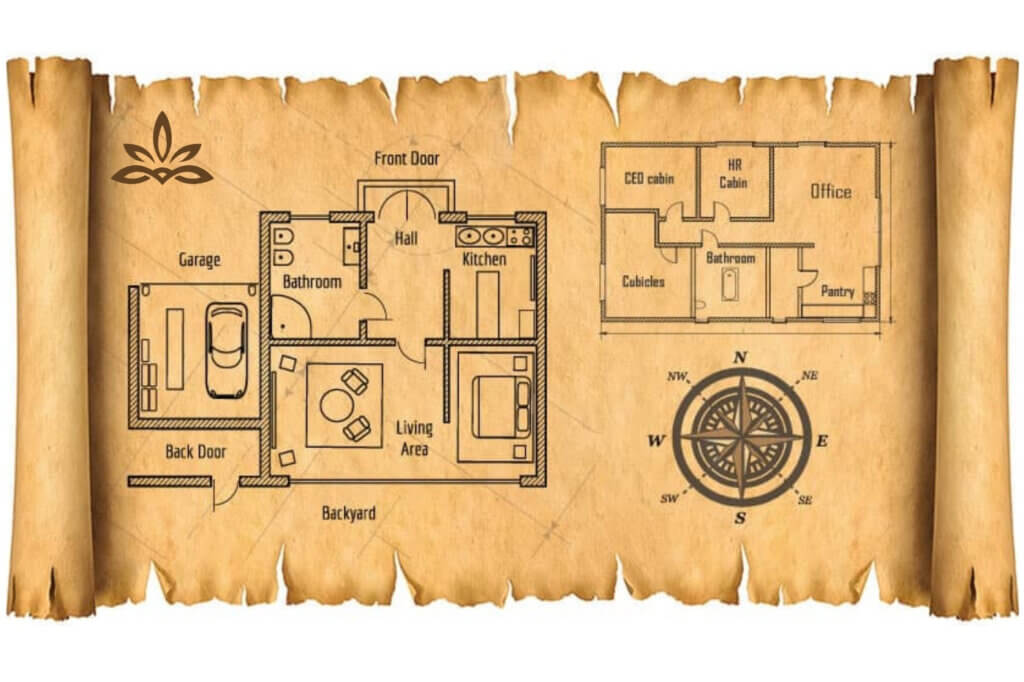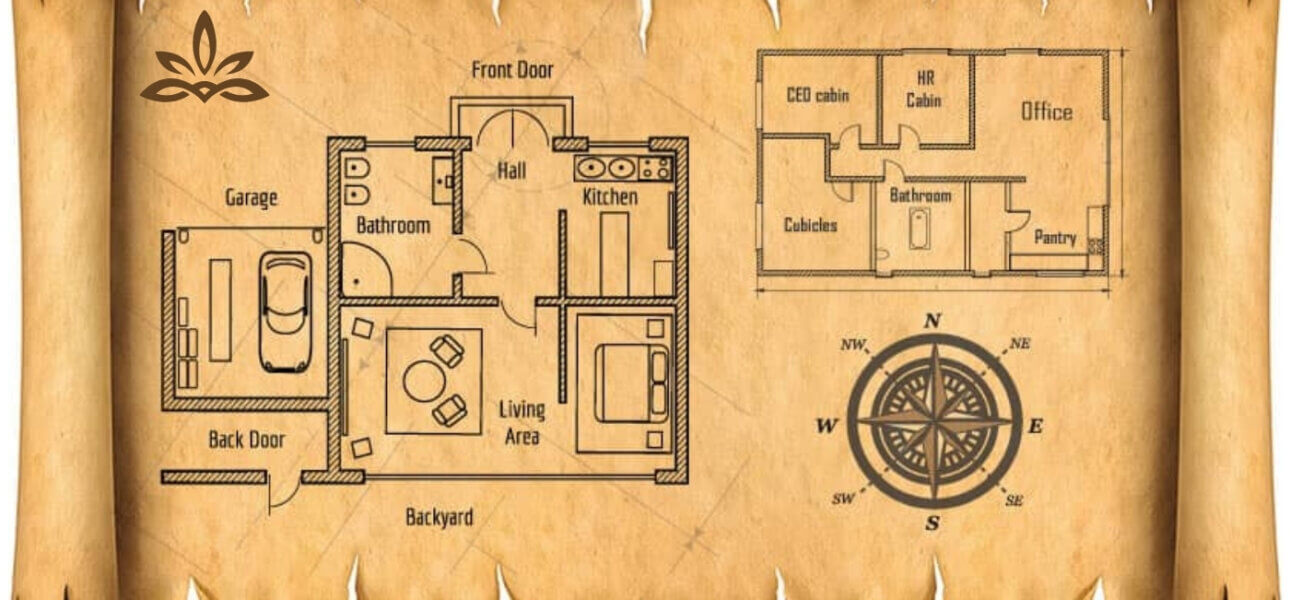Make the most of your villa plot by using trees as natural architects. With the right species in the right spot, you can cool your home, frame views, reduce dust and noise, and keep maintenance simple. In Padappai’s warm climate, shade planning is not cosmetic, it is comfort and savings.
This guide shows how to plan tree placement and shade for a vastu-friendly plot layout, with practical tips suited to Chennai’s weather and soils.

How the Sun Moves in Padappai and What It Means
Chennai sits close to the equator, so the sun is high most of the year. Heat gain is strongest from the west in the afternoon, and glare comes from the east in the morning. Smart shade planning blocks east and west sun, softens the south, and keeps the north open for daylight.
Short rule of thumb
• Shade the west first for summer comfort
• Filter the east light for soft mornings
• Use controlled shade on the south face
• Keep the north brighter for daylong light
Vastu-Friendly Orientation for Trees
You can balance tradition and science.
• North and east are best kept open and light, especially the northeast corner which is considered auspicious. Use shorter plants or tulsi in a raised planter here.
• Large canopy trees are better on the south or west boundaries to block heat.
• Fruit trees fit well in the east or north zones if they do not overshadow the main door.
• Avoid heavy trees crowding the northeast or directly in front of the entrance.
Safe Distances from Home, Wall, and Utilities
Roots and branches need space. Use this spacing guide for most Chennai-friendly species.
• Small trees frangipani, lemon, drumstick
Place 2 to 3 m from walls or foundations
• Medium trees Indian almond, ashoka Polyalthia, guava, jamun, neem
Place 3 to 5 m from walls or foundations
• Large trees rain tree, banyan, peepal, mango, coconut
Place 6 to 8 m from walls and away from overhead lines
Always add root barriers for aggressive rooters like peepal or banyan, and avoid septic tanks or underground pipes within 4 to 6 m.
Species That Work Well in Padappai
Pick hardy, low-maintenance trees that love heat and coastal air.
• For west-side shade
Indian almond Terminalia catappa, rain tree Samanea saman, neem
• For narrow setbacks and avenue lines
Ashoka Polyalthia longifolia, mast tree, bottlebrush
• For courtyards and highlights
Frangipani plumeria, champak michelia, tabebuia pink trumpet
• For edible landscapes
Mango, coconut, guava, sapota, drumstick moringa
• For biodiversity and fragrance
Indian cork tree millingtonia, night jasmine parijatham
Tip
Choose a mix of evergreen for all-year shade neem, ashoka and seasonal bloomers frangipani for colour without heavy leaf drop.
A Simple Shade Plan for a 30 by 50 ft Plot
Assume entry from east and house set slightly north for a south-west backyard.
• East frontage
Use a slim avenue of ashoka along the compound to filter morning light while keeping the facade visible. Add a tulsi platform near the northeast, not blocking the gate.
• South wall
Plant two Indian almond trees at equal spacing to cast afternoon shade on the living and kitchen walls. Keep 3.5 to 4 m from the wall.
• West boundary
Use one neem or a rain tree if space allows to block harsh west sun on bedrooms. Space at least 5 m from the structure.
• Courtyard or sit-out
One frangipani near the patio gives filtered shade, fragrance, and very little litter.
• Parking
Train a pergola with bougainvillea or thunbergia for filtered shade that does not drop large leaves on the car.
• Services side
Keep the north side lighter with herbs, dwarf citrus, and raised beds for kitchen use.
How to Calculate Shade Where You Need It
• Mark the walls that heat up most in the afternoon usually west and southwest.
• Use a simple rule
Tree height x 0.6 is a rough afternoon shadow length in Chennai’s summers.
Example
A 6 m neem throws about 3.5 to 4 m useful shade in late afternoon.
• Place the tree so the 3 pm to 5 pm shadow falls on windows, not empty ground.
• Use trellises near windows where trees cannot be placed.
Vastu Considerations Without Compromising Comfort
• Keep the northeast light. Use lawn, water element, tulsi.
• Place tall trees on south or west to anchor stability and reduce heat.
• Avoid thorny species at the main door.
• Keep the main pathway clear of overhead branches.
Water, Soil, and Micro-Climate Basics
Padappai soils are generally red loam to clayey in pockets. Improve pits with compost and river sand.
• Pit size
60 by 60 by 60 cm for small to medium trees, 90 by 90 by 90 cm for large canopy.
• Mulch
Spread 5 to 7 cm organic mulch to keep roots cool and reduce watering.
• Watering
Deep soak twice a week for first 3 months, then weekly during summer, taper in monsoon.
• Wind
Use ashoka or hedges on the southwest corner to break hot winds and dust from the Oragadam belt.
Low-Maintenance Care Plan
• Year 1 staking, weekly checks, deep watering, light pruning after monsoon
• Year 2 structural pruning to lift canopy above 2.2 m and clear the walkway
• Year 3 and beyond annual pruning after flowering or fruiting, compost top-dress before summer
Sample Planting Palette for a Velammal Garden Plot
Frontage east
Ashoka 3 units, spacing 2 m
Northeast corner
Tulsi planter or dwarf jasmine
South boundary
Indian almond 2 units, spacing 6 to 8 m
West boundary
Neem 1 unit, plus hedge of ixora or clerodendrum
Courtyard
Frangipani 1 unit near patio
Kitchen side north
Drumstick and herbs in raised beds
To explore vastu-friendly plots that already consider wind, sun, and green pockets, see velammalgarden.com. For a site visit and personalised shade plan aligned to your chosen plot, reach out through velammalgarden.com.
Common Mistakes to Avoid
• Planting large trees too close to the foundation or septic
• Blocking the northeast with dense canopy
• Choosing high-litter species over parking
• Ignoring power lines or neighbouring setbacks
• Overwatering newly planted trees in clayey soil
Quick Checklist Before You Plant
• Mark sun-exposed walls and windows
• Confirm setbacks and utility lines
• Choose species for function shade, fruit, fragrance
• Check vastu zones northeast light, tall trees southwest
• Finalise spacing and pit preparation
• Plan irrigation and mulch
FAQs: Tree Placement & Shade Planning Vastu Plot Layout
- What is the best tree placement per vastu on a villa plot
Answer
Keep the northeast open and light, place larger shade trees on the south and west to reduce heat, and use fruiting or ornamental trees in the east and north without blocking the main door. This balances vastu energy with practical cooling in Chennai’s climate. - Which trees are ideal for shade planning in Padappai
Answer
For reliable shade and low maintenance, choose neem, Indian almond, ashoka for narrow spaces, and frangipani for courtyards. For edibles, mango and guava work well. Large canopy trees like rain tree need generous space near west or south boundaries. - How far from my house should I plant a neem or mango
Answer
Maintain at least 3 to 5 m for medium trees like neem and 6 to 8 m for large trees like mango from foundations and compound walls. Use root barriers and keep clear of septic tanks and underground lines. - Can I keep trees near the entrance without breaking vastu rules
Answer
Yes, use slim vertical species like ashoka on the east or north side so that the entrance remains open and bright. Avoid heavy canopy or thorny plants at the main door and keep the northeast corner uncluttered. - How do I plan shade for west-facing bedrooms
Answer
Place a medium to large shade tree like Indian almond or neem 4 to 6 m away so the 3 pm to 5 pm shadow falls on the bedroom wall. Combine with an external screen or pergola near windows if setbacks are tight.
If you want a ready planting layout aligned to your exact Velammal Garden plot, including sun angles and vastu zones, we can map it room by room during your site visit. Start at velammalgarden.com and book a walkthrough at the Padappai site through velammalgarden.com.


